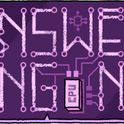The most shocking thing about the cloned sheep Dolly is not the fact of her existence or even that the British Ministry of Agriculture, Fisheries and Food has withdrawn support for the research that produced her, but that a ministry spokesman declined to comment on this bizarre decision-and got away with silence.
This is yet another galling illustration of how the British government (and Douglas Hogg's ministry in particular) repeatedly makes a monkey of science. Of course, we all know the theory that protects ministerial secrecy: the government is elected to govern between general elections and need not explain administrative decisions to anybody. (MPs can demand facts, but are lucky to be given explanations.) On this occasion, whatever the excuse, the decision is just plain wrong.
That was brought home to me by a distinguished molecular biologist over lunch in Cambridge, Massachusetts on 28th February, when the US newspapers were still full of Dolly. "It may be the most important experiment this century," he said. We argued the toss a little over that, but his meaning was clear. Like all good experiments, the cloning of Dolly overturns a good deal of conventional wisdom about the way that genes work in living creatures. It raises a string of questions only imprecisely asked in the past few years. And it is of potentially immense importance to medicine, whether or not it is ever possible and permissible to clone people.
We should be clear why the science of Dolly is so important. It has to do with how cells from different tissues of the body differ from each other, and why they stay different even when they divide, except perhaps when they become cancerous. Each cell has a full complement of DNA, exactly as in the single fertilised ovum from which an embryo develops. So why does a liver cell, say, always produce liver cells when it divides and not skin cells or nerve cells? The inference has been that the unwanted genes are somehow permanently switched off: in the liver only the genes essential to liver function are active in ordinary life.
How do cells get like that? Between the embryo and the newborn animal, there is an elaborate hierarchy of processes, all of them determined by the embryo's genes. The general rule seems to be that cells of different degrees of specialisation arise progressively, until they eventually produce what are called stem cells which, by repeated division, then populate specific organs with fully differentiated cells. Astonishingly, the essentials of this almost magical development of a single cell into a newborn creature has been revealed in just over 15 years-if only up to a point.
The sticking-point? It has been possible to identify the genes involved in the development of many important types of cells and to say a great deal about the properties of the proteins they produce. But nobody has a good idea how the proteins produced by the developmental genes make cells specialise in one set of functions rather than another.
This is where Dolly comes in. Her birth shows that the DNA from a specialised cell can, with suitable treatment, be made to function as a non-specialised stem cell, like the DNA of a newly fertilised ovum of a sheep. The conventional wisdom that the process of specialisation cannot be reversed has now been overturned.
The technique that Dr Ian Wilmut and his colleagues at the Roslin Institute have used to make Dolly has possible benefits for human medicine. It has to do with the choreography of cell division, necessary when tissues have to grow or replace dead cells. There are two steps in the process: first, the DNA is replicated, then the chromosomes line up in like pairs at the centre of the cell. At the end of each step, there is a pause. During the first, it seems, the cell checks that all the DNA has been replicated correctly; the second pause is used to tell whether the line-up of the chromosomes promises an equitable division between the two daughter cells. Only if both tests are successful are the chromosomes dragged apart to form two essentially identical cells.
The Wilmut procedure is to manipulate cells from the udders of sheep near lambing with the objective of shunting them into a state in which they have temporarily opted out of cell division. This can be done by starving them. The cells are then "quiescent" as Wilmut and his colleagues say; their working hypothesis is that quiescent cells nevertheless remain potent, and will be able to act as stem cells when put back into the ovum. Then, and this is the real skill, Wilmut and his team extracted the chromosomes from the ovum and fused it with the treated nucleus, which then behaves like a real embryo. After a normal pregnancy, Dolly, genetically identical with the ewe from which the mammary tissue is taken, was born.
Nothing is ever straightforward. Wilmut and his colleagues say that their lamb may have sprung not from a fully specialised mammary cell proper, but from a mammary stem cell left over from the birth of the 6-year-old ewe. That would not be a great surprise. One of nature's little tricks is to endow organs that regenerate (skin, heart, udder) with a lifetime supply of stem cells. But that does not affect the conclusion that specialised cells can be persuaded to behave as if they had lost their specialisation, such as the nuclei of newly fertilised ova; mammary stem cells are already pretty specialised.
The success rate is not high. Wilmut transferred 29 four or eight cell embryos to the uteri of 13 sheep, but recovered only one lamb-which is, so far, perfectly normal.
And what is the importance? Quite a long way ahead, when Wilmut's process for despecialising tissue cells is understood, there is now a serious prospect (possibly through cloned embryos) of growing in large quantities the specialised stem cells needed to regenerate whole organs such as livers. This would get around the problem of organ compatibility, not to mention the tragic shortage of human livers for transplantation.
What of cloning people? Wilmut and his colleagues have not shown that to be feasible. It may not be, but it is now on the cards. After all, most other techniques in manipulative embryology, from artificial insemination to in vitro fertilisation, were first proved possible in farm animals or mice. Thirty years ago, the leaders in the field were Thaddeus Mann and JR Rowson from the Veterinary School at Cambridge, which the government threatened to close down in 1990. No doubt it will have occurred to the Roslin Institute that it could avoid such a threat at the hands of Hogg's timorous ministry by encouraging Wilmut to clone a successful racehorse or two (there would be problems with the world's racetrack authorities, which forbid even artificial insemination).
But in Britain, cloning people is probably already against the law. It is a criminal offence to grow a human embryo without a licence, and certainly not for longer than 14 days from fertilisation. If the lawyers believe the law needs clarifying, that need not take the House of Commons more than ten minutes. But there is no great hurry; nobody has worked out a recipe yet.
But is a ban really necessary? Yes, is the only answer, and for three reasons. First, in the current ignorance of the causes of ageing, the most fashionable idea is that a systematic shortening of the ends of chromosomes, where the DNA is specially constructed to prevent it unravelling, is responsible. If this is really how ageing happens, which is far from certain, and if Wilmut's people have not fortuitously reset the DNA clock, Dolly may already be six years old. The most egotistical people would not arrange to have themselves cloned if the outcome was biologically a contemporary. What sibling rivalry there would be!
Another objection lies in the reason why the British law (copied elsewhere) includes the provision that frozen human embryos which have not been implanted in a uterus should be destroyed after five years. That time is meant to represent an acceptable interval between the birth of siblings (not genetically identical). Experience may show that it is too short. But the birth of genetically identical relatives separated in age by several decades would be even more distasteful.
Finally, there is the truly genetic argument. All mammals rely for their evolutionary durability on the mixing together of corresponding parts of similar chromosomes derived from two parents. The mixing is most vigorous in the production of germ cells, sperms and ova. Omit that step, and there would be nothing but genetic uniformity in sight. That could be seriously dangerous.
None of this is going to happen soon, which is why Douglas Hogg (if he did cancel that grant out of squeamishness) is guilty of a knee-jerk reaction. Poor man, he is not alone. President Clinton has demanded of his advisers that they should tell him how to respond in 90 days-by the end of May. What seems to be missing everywhere is a recognition that even in modern genetics, there is always a substantial interval between successful research and its practical application. Ethical imperatives are rarely as urgent as they seem.












